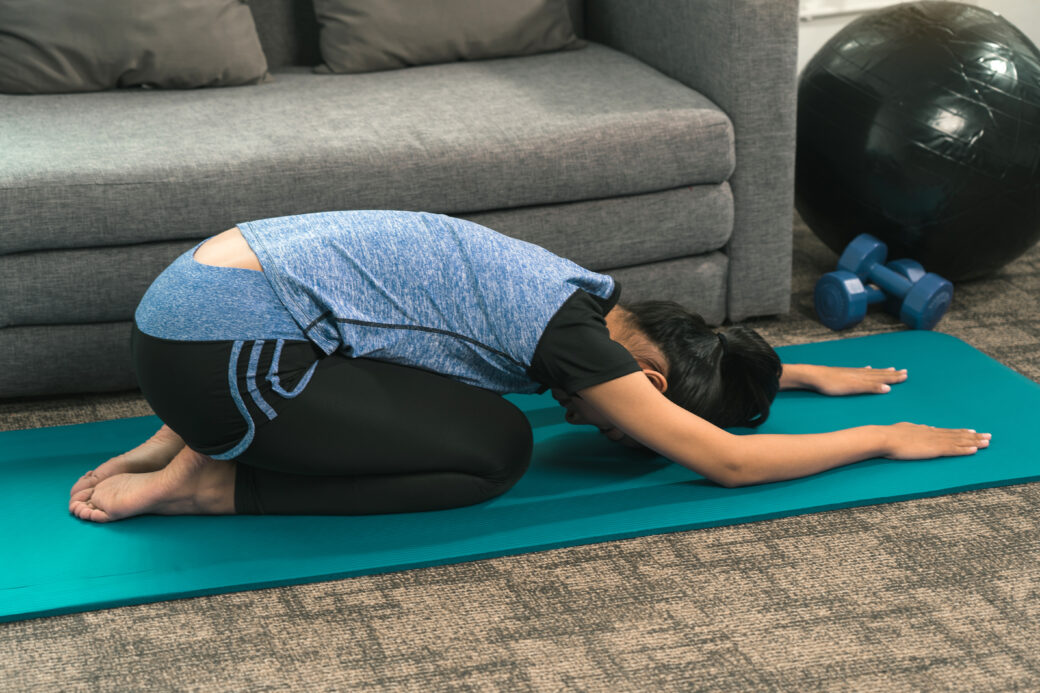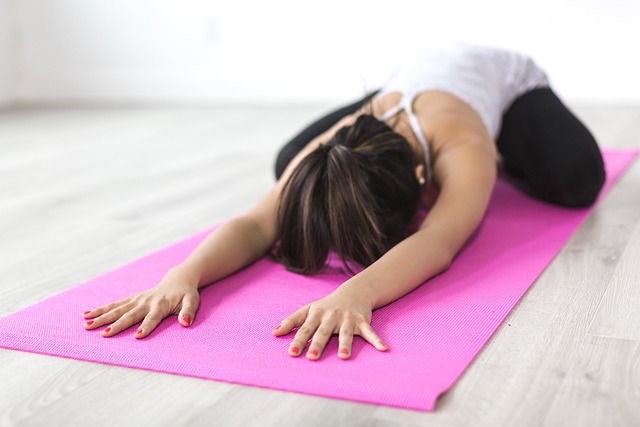
Unlocking your lumbar spine involves techniques and exercises that promote mobility, flexibility, and reduced tension in the lower back.
Here are several methods to help you unlock your lumbar spine…
Stretching Exercises
Knee-to-Chest Stretch
- How to Do It
- Lie on your back with your knees bent and feet flat on the floor.
- Bring one knee to your chest, holding it with both hands.
- Hold for 20–30 seconds, then switch legs.
- Repeat 2-3 times for each leg.
Child’s Pose
- How to Do It
- Start on your hands and knees.
- Sit back on your heels while reaching your arms forward.
- Hold the stretch for 30–60 seconds.
- Repeat 2-3 times.
Cat-Cow Stretch
- How to Do It
- Start on your hands and knees.
- Arch your back up toward the ceiling (cat pose).
- Dip your back down toward the floor (cow pose).
- Move slowly between the poses for 1-2 minutes.
Spinal Twist
- How to Do It
- Lie on your back with your knees bent and feet flat on the floor.
- Let your knees fall to one side while keeping your shoulders on the floor.
- Hold for 20–30 seconds, then switch sides.
- Repeat 2-3 times for each side.
Mobility Exercises
Pelvic Tilts
- How to Do It
- Lie on your back with your knees bent and feet flat on the floor.
- Flatten your lower back against the floor by tightening your abdominal muscles and tilting your pelvis.
- Hold for a few seconds, then release.
- Repeat 10-15 times.
Lumbar Rotation
- How to Do It
- Sit on the floor with your legs extended.
- Cross one leg over the other, placing your foot flat on the floor.
- Twist your upper body toward the bent knee, using your opposite arm to push against your knee.
- Hold for 20-30 seconds, then switch sides.
- Repeat 2-3 times for each side.
Bridge Exercise
- How to Do It
- Lie on your back with your knees bent and feet flat on the floor.
- Lift your hips toward the ceiling, forming a straight line from your shoulders to your knees.
- Hold for a few seconds, then slowly lower back down.
- Repeat 10-15 times.
Foam Rolling
- How to Do It
- Sit on the floor with a foam roller positioned horizontally behind you.
- Lean back so that the foam roller is under your lower back.
- Use your legs to slowly roll your body back and forth over the foam roller, focusing on areas of tension.
- Roll for 1-2 minutes, avoiding direct pressure on the spine.
Self-Massage Techniques
Tennis Ball or Massage Ball
- How to Do It
- Lie on your back on a flat surface.
- Place a tennis ball or massage ball under your lower back.
- Slowly roll your body over the ball, using your body weight to apply pressure to the tight spots.
- Focus on areas that feel particularly tight, pausing for 20-30 seconds.
- Repeat on the other side.
Strengthening Exercises
Bird Dog
- How to Do It
- Start on your hands and knees.
- Extend your right arm forward and your left leg back, keeping your body straight.
- Hold for a few seconds, then return to the starting position.
- Repeat on the opposite side.
- Perform 2-3 sets of 10-15 repetitions per side.
Plank
- How to Do It
- Start in a forearm plank position with your elbows directly under your shoulders.
- Engage your core and hold the position, keeping your body straight.
- Hold for 20–60 seconds.
- Perform 2-3 sets.
Hydration and Movement
- Stay Hydrated – Drinking plenty of water helps maintain the health of your intervertebral discs.
- Frequent Movement – Avoid sitting for prolonged periods. Stand up, stretch, and walk around every 30–60 minutes.
Consult a Professional
If you have persistent or severe lumbar spine issues, consider consulting a healthcare professional, such as a physical therapist, chiropractor, or orthopedic specialist. They can provide personalized treatment plans and manual adjustments.
Conclusion
Unlocking your lumbar spine involves a combination of stretching, mobility exercises, foam rolling, self-massage, strengthening exercises, and proper hydration. Regularly incorporating these practices into your routine can help alleviate tension, improve flexibility, and reduce lower back pain. Always listen to your body, avoid pushing through pain, and seek professional advice if needed.



